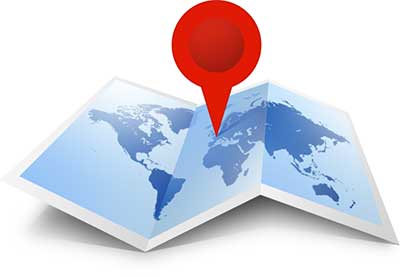Geo-Tagging: For better conservation of Wetlands
In News
The revenue and forest department will work together to conduct ground inspections and check the status of wetlands under the guidance of Uttarakhand Space Application Centre.
About
The initiative is part of a nationwide project of Space Application Centre, Ahmedabad that is trying to gather information about wetlands across the country.
The Satellite data provided from Space application Centre will be used to Geo-tag the wetlands of the state. Later field visits will help to map the wetlands.
This step will help the state government to track the development of wetlands. That will tell whether they are increasing or the area has decreased due to various developmental activities and plan conservation policies accordingly, as wetlands are very important for the ecology.
In October, Asan Conservation Reserve in Dehradun district became the first Ramsar site, a wetland of international importance.
From the nine criteria for being declared as a Ramsar site, Asan Conservation Reserve had cleared five: species and ecological communities, specific criteria based on water birds and specific criteria based on fish.
Geo-Tagging
Geo-tagging is the process of ascertaining the geographical location of an image. It is the process of adding geographical identification like latitude and longitude to various media such as a photo or video. Geo-tagging can help users find a wide variety of location-specific information from a device. It provides users the location of the content of a given picture.
To this end, the central government works in association with ISRO’s National Remote Sensing Centre (NRSC) at Hyderabad, which uses a software platform, Bhuvan that “allows users to explore a 2D/3D representation of the surface of the Earth”.
The first scheme that experimented with geo-tagging was the Mahatma Gandhi National Rural Employment Guarantee Act (MGNREGA).
The Drawbacks
Erratic internet connections and lack of knowledge on the ground prove to be big hurdles.
In states where there is a shortage of ground functionaries, adding this extra technological intervention means greater burden on them.
The complexity of this process and its use, along with lack of adequate information dissemination, often ends up confusing the worker or beneficiary on the ground, instead of necessarily aiding them.
How far it is an effective tool in wetland conservation?
Wetland mapping is the first step to monitoring this important part of the ecosystem.
Wetland management helps reduce effects from floodwaters and storm surges, help recharge aquifers, filter sedimentation and pollution from upland drainage. From conservation point of view, coastal habitats can be monitored.
Mapping of wetlands using geospatial tools can be done accurately at minimal costs and manpower use.
Monitoring at multiple spatial and temporal scales, support better understanding of the ecosystem for continuous assessment and analysis of future trends.
Various geospatial tools are at disposal, from a range of GIS software to remote sensing data, to give an accurate picture of wetland status and study of trends.
Mapping of wetlands using common attributes help to form a database of wetland distribution across the country. An inventory of wetlands in an area is vital to maintaining the ecological balances.
Geospatial tools when applied to wetland mapping help assess landscape changes, as well as monitor the pollution and siltation levels, weed infestation and aquaculture development.
Study of wetland biodiversity, wetland ecology, conservation and restoration, seasonal monitoring and characterization, are possible with technology enabled mapping in an integrated multi-layered structure using remotely sensed data.
A uniform methodology for codification, characterization and action plan needs to be evolved for creating a nationwide database of wetlands.
This would be the first step in forming an effective wetland policy.








